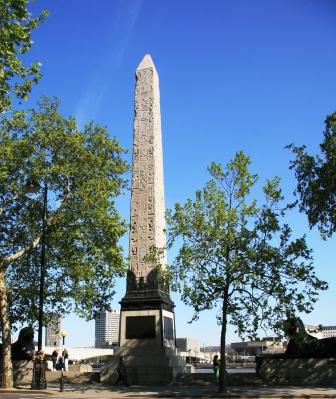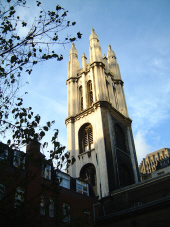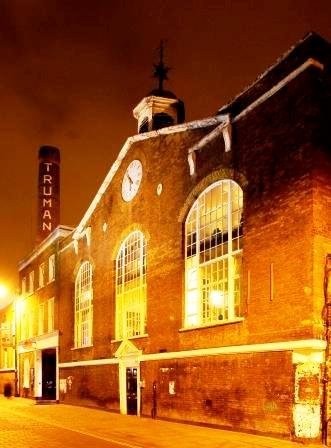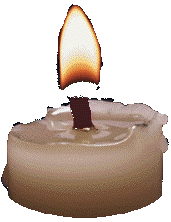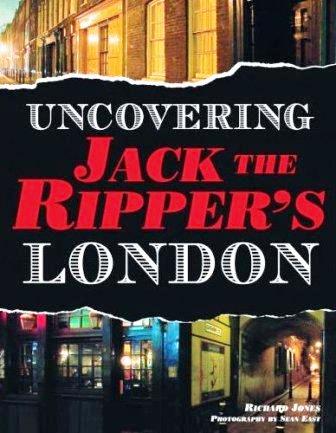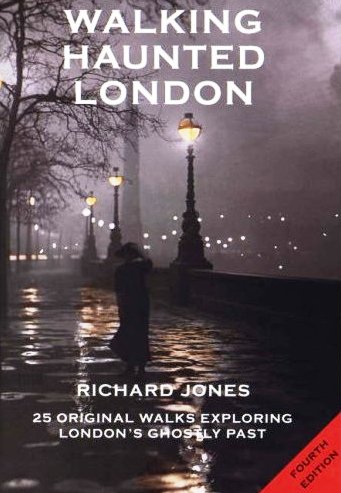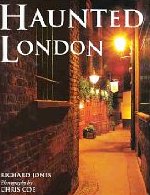LONDON'S HAUNTED THEATRES
The Theatre Royal Drury Lane. Catherine Street. WC2.
The Man In Grey
The Theatre Royal Drury Lane is the oldest working theatre in London, and although the present building dates from 1812, the first theatre on the site was founded in 1663.
In keeping with its antiquity, many phantoms are known to lurk in the wings behind its spectacular cream portico.
There is the ghost of Joseph Grimaldi (1778-1837), who in the
course of a long and distinctive theatrical career
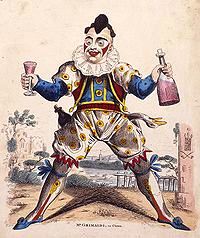 almost single-handedly laid
the foundations of the pantomime tradition. The character of the white faced
innocent rogue that he created became so universally popular that clowns are
still known “Joeys” in honour of the father of modern clownery.
almost single-handedly laid
the foundations of the pantomime tradition. The character of the white faced
innocent rogue that he created became so universally popular that clowns are
still known “Joeys” in honour of the father of modern clownery.
But the exertions of his craft exacted a terrible toll on Grimaldi’s health and he was overcome by crippling disease that forced him to give up acting.
By 1818 he was destitute, and so a benefit performance was organised at the Theatre Royal. Despite having to be carried onto the stage, and only able to perform seated, Grimaldi had lost none of his magic, and showed himself able to evoke laughter at will.
Although he died in 1837, his ghost has returned many times to the Theatre Royal and is renowned for administering a mischievous kick, and actors, cleaners, usherettes have all been on the receiving end of his spectral boot as they go about their everyday duties. One of Grimaldi’s final wishes was that his head should be severed from his body prior to burial. This macabre request was, apparently, carried out, and this might account for the disembodied white face, which has been seen floating around the theatre.
Another clown to haunt the Theatre Royal is Dan Leno, who was famed both for his clog dancing routine and his portrayal of a pantomime dame.
But at
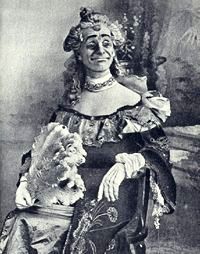 the height of his popularity Dan Leno went mad, and
he died in 1904 aged just 43.
the height of his popularity Dan Leno went mad, and
he died in 1904 aged just 43.
His ghost, however, refuses to depart from the spotlights and often returns for an encore. Leno suffered badly from incontinence and used to disguise the resultant smell with perfume. Actors on stage might not see his ghost, but often detect his invisible presence as his passage is marked by the smell of Lavender left hanging in the air.
In 1981 during a performance of "The Pirates of Penzance" Nick Bromley, the company manager, was standing in the wings one night watching the performance, when suddenly he was pushed violently from behind. He spun round but found that there was nobody there.
The next night an actress was standing in exactly the same spot when somebody tugged on her wig from behind. She too found no-one behind her when she turned to investigate. People passing what was once Leno’s dressing room have also reported hearing a rhythmic drumming sound emanating from the room. This is believed to be the sound of his ghost rehearsing his famous clog dancing routine over and over again.
But the theatre’s most famous ghost is that of the so-called “Man in Grey”, the limping apparition of a young man in a powdered wig, white- ruffed shirt, grey riding cloak and three-cornered hat.
He invariably appears during the hours of daylight, and seldom digresses from a timeworn route. He materialises on one side of the upper circle, crosses to the other side where he astonishes witnesses by melting into the wall.
In 1939 more than half the cast of "The Dancing Years", who were on stage for a photo call, witnessed his ghost cross the upper circle and disappear in time honoured fashion.
He has been seen by members of the audience, by famous actors too numerous to mention, by firemen, theatre managers and numerous other staff at the Theatre Royal.
He has sometimes also been seen sitting in the end seat of the fourth row by the central gangway of the upper circle. One morning a cleaner who was new to the theatre and had no knowledge of its ghost, encountered him in this seat at 10am. Thinking he was an actor, she set down her equipment to speak with him, whereupon he vanished. As she looked round for an explanation she noticed the same figure disappearing into the wall to the side of the circle.
The identity of the “Man in Grey” remains a mystery, although an intriguing discovery during renovations in the 1870’s may shed some light onto what caused his ghost to haunt the theatre. As workmen went about their business they broke into a hidden room behind the wall into which the ghost always vanishes. Inside they found the skeleton of a man, surrounded by remnants of grey cloth and dagger protruding from its rib cage. It has been speculated that the remains were those of a young man who came up to London during the time of Queen Anne. Having won the affections an actress at the theatre, he was murdered by her actor lover in a fit of jealous rage and his body was subsequently hidden in the secret recess where it lay undiscovered until the Victorian renovation of the theatre.
But whatever the reason behind his haunting the Man in Grey is welcome ghost since it is universally acknowledged that he only ever appears at the beginning of a successful run at the theatre. "The King and I", "South Pacific" and "Oklahoma" are just three of the productions he has endorsed with his presence, and the long running "Miss Saigon" was honoured with an appearance each time there was a change of cast.
He is therefore treated with affection rather than fear and his antics, which include pushing performers to positions from where they can deliver their lines to best advantage, have become the stuff of theatrical legend.
